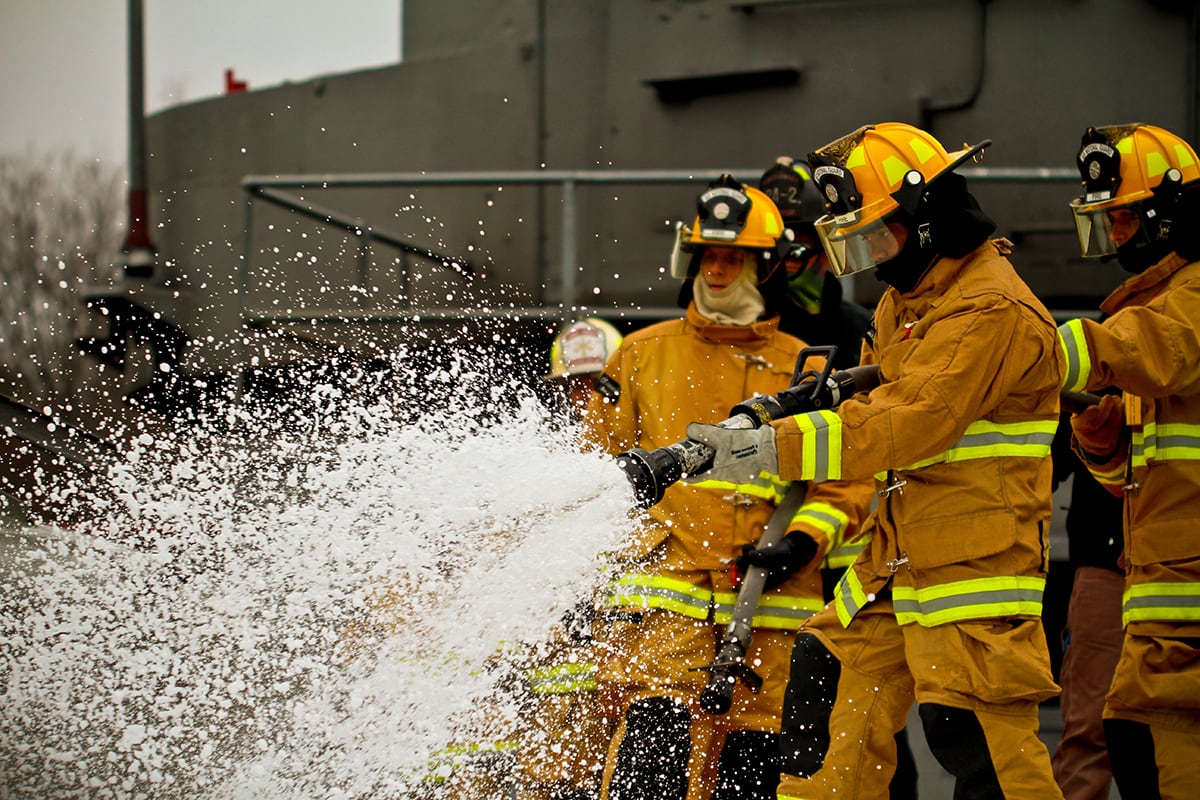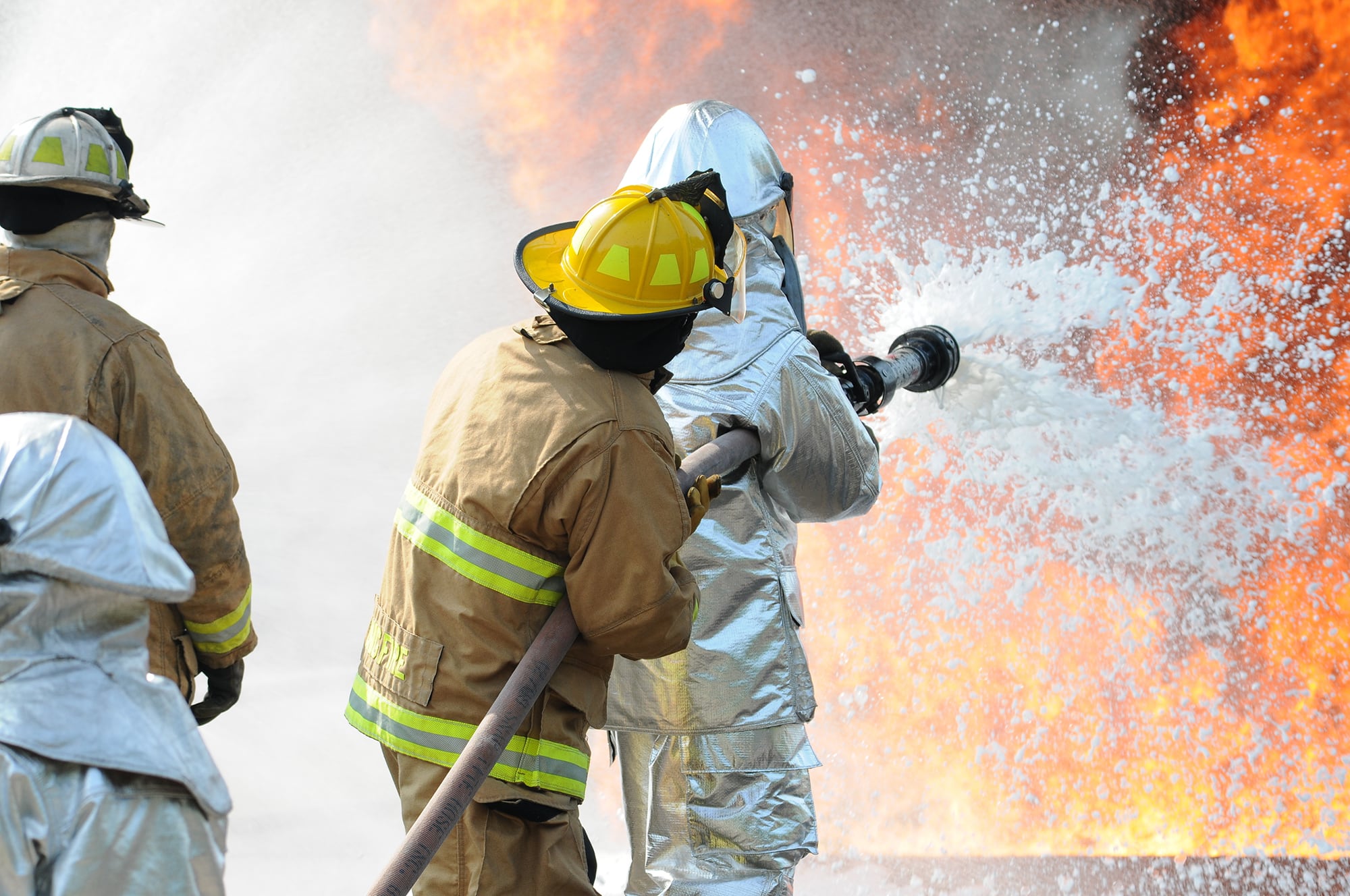In April a barbecue near the Marine Corps Air Station Futenma, Okinawa, led to the release of 60,000 gallons of the potentially toxic aqueous film-forming foam, known as AFFF.
The firefighting foam contains the per- and polyfluoroalkyl substances, also known as PFAS, which often leak into the ground ― and once consumed by humans never break down but simply accumulate over time.
The Marine Corps announced that this leak did not pose any health risks and that no drinking water was affected, according to Stars and Stripes.
But PFAS contamination has become a military-wide problem, with more than 700 military installations having either confirmed or suspected cases of contamination, according to the Environmental Working Group.
RELATED

In 2019 Congress ordered the military to phase out the use of AFFF by 2024, in the hopes of preventing further contamination.
On Sept. 15 lawmakers with the House Armed Services Committee met to discuss the Department of Defense’s progress in replacing PFAS and dealing with past contaminations.
Alabama Republican Rep. Mo Brooks questioned the DoD’s ability to find a safe and effective alternative to PFAS firefighting foam by the 2024 deadline Congress has laid out.
“Are you confident the Department of Defense will be able to not only be able to identify an effective PFAS free foam but also by 2024 install PFAS free foams all all Department installations?” Brooks asked Herb Nelson, director of DoD’s Strategic Environment Research and Development Program.
“I don’t know if ‘confident’ is the right word, but quite optimistic,” Nelson testified to the committee.
All the foams in development are able to prevent fires from reigniting to the required DoD standard.
However they fall just short of being able to extinguish a 28-square-foot gasoline fire under the 30 second requirements, though many can put out the fire in 40 seconds to 45 seconds, Nelson testified.
Brooks also questioned whether the alternatives currently being tested may end up causing more environmental harm than the foam currently in use.
Nelson said his program currently is running environmental tests parallel to the development of new firefighting foams. However, the process has been delayed by several months due to the COVID-19 pandemic.
The DoD also is working with the National Toxicology Program to look at potential human health problems from the alternatives, testified Maureen Sullivan, the deputy assistant secretary of defense acquisition and sustainment.
“A lot of work” still needs to be done, acknowledged Chairman of the Subcommittee on Readiness Rep. John Garamendi, D-California, but he emphasized that the 2024 deadline is important to ensure the toxic chemical is taken out of use as quickly as possible.
Rep. Elissa Slotkin, D-Michigan, focused her comments on the efforts by the DoD to cleanup known PFAS contamination sites.
“I represent a community that has a number of PFAS contamination sites, people can’t eat the fish from the rivers, they can’t let their dogs or their children touch the foam that is coming up on their beachfront property and they are concerned about their drinking water,” Slotkin said.
Michigan recently passed stringent drinking water standards on seven types of PFAS, including perfluorooctanoic acid, or PFOA, and perfluoroactanesulfonic acid, PFOS which go beyond what the Environmental Protection Agency has published.
In 2016 EPA issued drinking water health advisories for drinking water that contains at least 70 parts per trillion of PFOA or PFAS.
The new Michigan standard lowers the standards to just eight parts per trillion for PFOA and 16 parts per trillion for PFOS.
Slotkin questioned why the DoD would still use EPA’s standard when determining remedies to PFAS contamination.
“The state standards do come in as part of the cleanup decision so when we come into the remedy selection the state standards play an integral role,” Sullivan testified.
Slotkin said, “factoring it and having to live by it are different things.”
“We haven’t seen any movement by the Department of Defense to do anything other than the EPA standard,” she added.
The subcommittee’s ranking member Rep. Doug Lamborn asked what would happen if the Defense Department did comply to standards set by individual states.
“If a state standard was so stringent that maybe it’s out of line with what science has said or EPA has said is necessary, is there a risk there?” Lamborn asked.
“It could be precedent setting,” Sullivan replied.
Slotkin acknowledged the “risks” involved with following the Michigan standard, but called out EPA for failing to set a standard that is strict enough to protect her constituents.
“I understand these complications that this would cause the Defense Department to have to live by these different state standards but we are only doing it out of sheer desperation,” Slotkin said.




